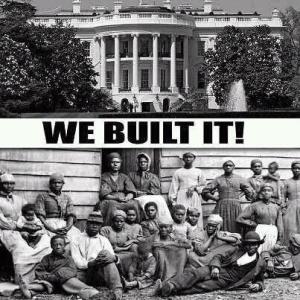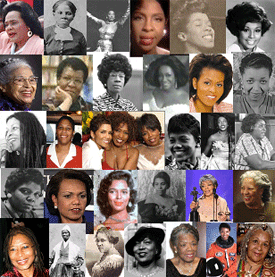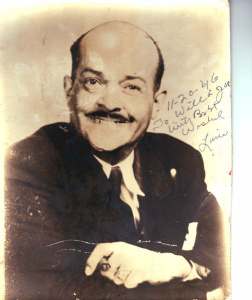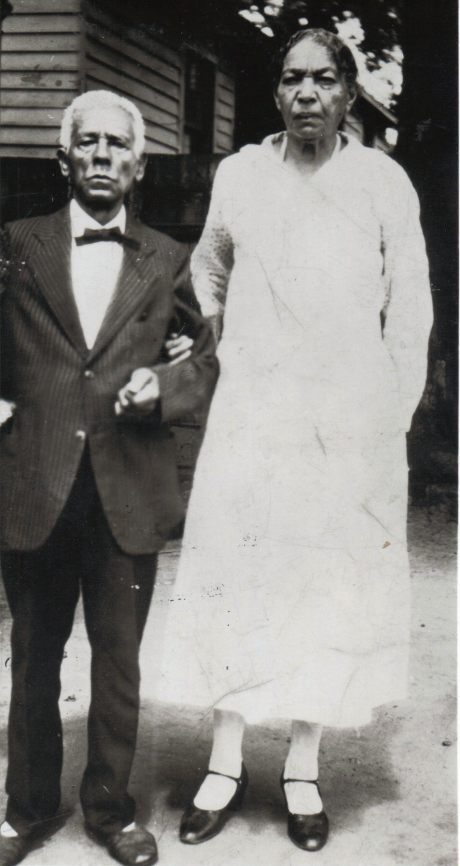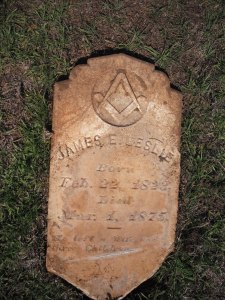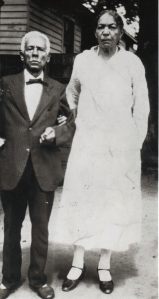A “Home Place” for African American Genealogy
25 July 2016
Imagine an online community where you can research and recognize your ancestors…download, print and share historic documents and photos… load family trees… collaborate and get help in real-time from other researchers…. a POWERHOUSE of genealogical discovery specifically focused on African Americans.
We are proud to announce that Our Black Ancestry is making that dream come true. We made a MAJOR step forward recently by reformatting our website into a more robust space that offers benefits to both the general public and a membership community.
For members, we will function like other genealogical societies do. Members create a personal profile that is accessible only to other members. Once your profile is complete, you can access surname and DNA searches, communicate with other members, participate in member forums, receive updates on resource links and discount offers on products and services. One of the greatest benefits is PRIVACY – for all of your communication and anything you share.
Membership costs only $25 per year! To join, visit the Our Black Ancestry website and CLICK the SUBSCRIBE button at the bottom of the home page.
____________________________________________________________________________
Who’s in charge?
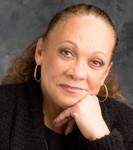 Sharon Morgan is the founder of Our Black Ancestry. She is a genealogist, writer and marketing communications professional whose ancestors were enslaved in Mississippi and Alabama. Her 30 years of research led her to create Our Black Ancestry in 2007 to help others trace their family histories. It also led her to co-author a book: Gather at the Table: The Healing Journey of a Daughter of Slavery and a Son of the Slave Trade, which was published in 2012 by Beacon Press.
Sharon Morgan is the founder of Our Black Ancestry. She is a genealogist, writer and marketing communications professional whose ancestors were enslaved in Mississippi and Alabama. Her 30 years of research led her to create Our Black Ancestry in 2007 to help others trace their family histories. It also led her to co-author a book: Gather at the Table: The Healing Journey of a Daughter of Slavery and a Son of the Slave Trade, which was published in 2012 by Beacon Press.
 Diana Roman is president of the Our Black Ancestry Foundation. She is a marketing and international business development professional who is a descendant of the Hairston family, one of the largest slave owning families in American history. Their story is told in the book The Hairstons: An American Family in Black and White. Historical family documents are presented on the website HairstonGenealogy.com, which is sponsored by Our Black Ancestry.
Diana Roman is president of the Our Black Ancestry Foundation. She is a marketing and international business development professional who is a descendant of the Hairston family, one of the largest slave owning families in American history. Their story is told in the book The Hairstons: An American Family in Black and White. Historical family documents are presented on the website HairstonGenealogy.com, which is sponsored by Our Black Ancestry.
Pull Back the Covers
26 February 2015
Black History Month 2015 is almost over. As I do every year, I spent the past few weeks gorging myself on the glut of special programming on TV – feature films, documentaries, and other programs with African American themes. I glued myself to the television to watch a marathon of “Many Rivers to Cross,” the Dr. Henry Louis Gates special on PBS that examined the history of African Americans from slavery through the election of President Barack Obama. I also watched the NAACP Image Awards, which recognizes films and programs that are largely ignored by institutions like the Academy of Motion Picture Arts and Sciences.
As a genealogist, I am steeped in history ALL the time…. every day… all year long. It is clear to me that history is a continuum; a confluence of historical events that inform the contemporary society in which we live. American history is indelibly marked by the experiences of African Americans, who were essential to building “the greatest country in the world.” I am appalled that that FACT continues to be ignored in every month BUT February. As my Uncle Louie used to say: “History is HIS-story” because the victor writes the books. The winners in the historic tableau rarely give voice to the victims of their inglorious achievements.
We are living in times when the wealth gap between black and white Americans is at incredible levels. Poverty rates for African Americans are 169 percent higher. Unemployment rates for black people between the ages of 16-24 exceeds 21 percent. African Americans are incarcerated at 10 times the rate for whites. Seventy-six unarmed black people were killed by police from 1999-2014.
How did this that happen? Aside from many other reasons — HISTORY stands out as #1. Why? Because America is built on a foundation of genocide and slavery that made certain people less than human, not entitled to respect, and certainly not deserving of more than 28 days of recognition.
Although black people have been in America since the 16th century, “it was not until the 20th century that they gained a respectable presence in the history books.” When Dr. Carter G. Woodson, the son of slaves who earned a doctorate at Harvard University, first promoted the creation of “Black History Week” in 1926, he was “disturbed to find in his studies that history books largely ignored the black American population — and when blacks did figure into the picture, it was generally in ways that reflected the inferior social position they were assigned at the time.”
At that time, there was SO MUCH we – African Americans — did not know (forget about the white people, who I think KNEW but didn’t want to TELL). The things we DID know were that black people were being segregated, terrorized and lynched. We were in the midst of a Great Migration that moved more than five million black people from the South of our enslavement to the “promised land” of the North.
As a black person, Black History Month holds meaning for me because it gives us (black people) a segregated period of time in which to FOCUS on the bridges that brought us over – the past that made us who we are. If I were a conscious white person, it would be even more important. I would WANT to know what my ancestors did that brought us to a place where the first African American president could so viciously maligned in spite of his historic successes as Americans (white) jumped from Selma to post racial… with no steps in between… a time when black people (especially children) could be shot down in the streets without censure of law.
This clip from 2014 by one of my favorite psychologists, Dr. Joy DeGruy, says it all. She wrote the foreword to my book (Gather at the Table) and has written/presented extensively about the legacy of slavery that inflicted us with “post traumatic slave syndrome.” As she says, the goal SHOULD BE to infuse the TRUE history of America into school curricula. Of course, we know the Texas State School Board (which de facto controls the content of school books for American children) will squash that idea. After all, they question Darwin’s theory of evolution, preach abstinence as the only acceptable form of birth control, and want slavery written out of text books
WATCH VIDEO
Let’s Build a Home Place!
1 February 2015
Imagine an online community where we can search our ancestors…download, print and share historic documents… and collaborate in real-time with other researchers. That is the place Our Black Ancestry wants to build — a POWERHOUSE of genealogical discovery for African Americans.
Ever since we first went online in 2007 – we have hoped and prayed OBA would grow. Today, there are more than 20,000 people on our Facebook page and 8000 visitors a month to our website. It is clear that SO MANY of us are interested in discovering our roots, yet there is NOBODY serving that need in the way we hope to do.
It takes MONEY to make the OBA dream a reality and we ask that you contribute to that dream TODAY. Funds raised in this campaign will be used to pay hosting fees for our existing site and to retain a developer to build a more robust technology platform. Just imagine what a fabulous OBA home place we could build if EVERYONE in our network made a contribution!
Our fundraising campaign will be promoted through the month of February. If you have lots, give lots. If you don’t — give $25…. or $10…. even $5…. whatever your budget can afford.
Click to contribute — this link will take you to the OBA website where you will see a DONATE button in the lefthand navigation column: Our Black Ancestry
If you want to know more, we would be happy to answer any questions you might have. Email smorgan@ourblackancestry.com
Who’s in charge?
Sharon Morgan is a genealogist, writer and marketing communications professional whose ancestors were enslaved in Mississippi and Alabama. Her 30 years of research led her to create Our Black Ancestry to help others trace their family histories. It also led her to co-author a book: Gather at the Table: The Healing Journey of a Daughter of Slavery and a Son of the Slave Trade, which was published in 2012 by Beacon Press.
Diana Roman is a marketing and international business development professional. She is descended from the Hairston family, one of the largest slave owning families in American history. Their story is told in the book The Hairstons: An American Family in Black and White. Historical family documents are presented on the website HairstonGenealogy.com, which is sponsored by Our Black Ancestry.
BACK ROADS
2 September 2014
Every year, finances permitting, I head South for genealogical research. I pack up my Jeep with clothes, food, and emergency supplies. My handy GPS leads the way. It knows the back roads far better than I.
In the cache stored in the boot, I have a battery charger, folding shovel, collapsible bucket, and knee-high fireman’s boots. In the glove box, I store a hunter’s knife and ID that shows I own my vehicle and the contents therein. You never know what exigencies might exist on the road less traveled!
Rather than driving interstate highways, I stick to two-lane roads so I can take in the scenery and get a picture of what life might have been like in the communities in which my ancestors lived more than a hundred years before I was born.
This year, I was able to spend two weeks exploring the back roads of ancestral home places in rural Mississippi and Alabama. I hit courthouses and communities in Macon, Mississippi and Lowndes County, Alabama, with many detours along the way. It’s not like I haven’t been to these places before, but I am forever aware that there is always more to see… and feel…. and appreciate. This time, I registered more than 3,000 miles in my quest.
Along the way, there are few stop lights or petrol stations. The landscape is dominated by expansive fields of cotton and corn, interspersed with grazing cows. If my Jeep were to break down, who knows what the consequences might be? An out-of-the-blue summer storm rocked my car to the hinges. I wasn’t sure whether to abandon ship or keep on truckin’.
The entire scene is redolent of a life that an urban woman like me finds hard to comprehend. There are countless churches and, every now and then, I pass a sign reminding me that Jesus is love and hell is a just reward.
I returned from my adventure this year with a box of copies… documents that prove my heritage as a “daughter of slavery” – part of the subtitle of the book I wrote about healing from the egregious legacy from which 90 percent of African Americans descend.
As I culled documents in the Macon courthouse and at the archives in Jackson, my heart was rended by the visceral realization of the exigencies of the lives my ancestors lived.
I found a MS Supreme Court case where my ancestress, Bettie WARFE/GAVIN, was accused of operating a “bawdy house” and sentenced to jail. There was another case that disputed the land of Seborn GAVIN, who bought, after Emancipation, the plantation upon which he was enslaved by his very own father.
In one testimony (before the Mississippi Supreme Court), Bettie WARFE/GAVIN admitted that she didn’t even know how old she was:
Q About how old are you Aunt Bettie?
A I don’t know sir, how old I am. I was raised up by a white lady and was sold over here from Virginia. I don’t know how old I am, too old to be here.
She also explained:
Q You were convicted of getting children by Bob Gavin?
A Yes sir; he was my master. He bought me from his uncle and I couldn’t help it.
Q Have you ever been convicted of any unlawful cohabitation?
A I was convicted by getting children by my master.
My takeaway from this testimony, and many other documents I found, is that slavery was such an incredibly abominable institution, embraced by an entire nation, it astounds my mind. I am afraid of the possibility that we may never succeed in healing from its effects.
With these observations in mind, is it any wonder that young black boys like Trayvon Martin and Michael Brown lay dead, victims of a “system” that views “children” like me as less than human?
And Still I Rise
19 December 2013
GUEST BLOG by Patricia Moncure Thomas
African American women have left an indelible imprint on America through centuries of arduous struggles to achieve self-determination, equality, and freedom from racial, class, and sexual exploitation — making a way out of no way. They have taken a stand for human beings regardless of color, culture, religion or gender, exhibiting without doubt that black women are neither morally or intellectually inferior. Their struggle continues today.
The African American woman was subjected to some of the most inhumane conditions man has ever known; conditions designed to strip all remnants of her African heritage and to reduce her to a status of subhuman. She became chattel property, not allowed to speak her native language, practice her native religion, nor legally marry or rear her children without interruption. White slave masters sought to reduce her to a sexual object and the breeder of their illegitimate children; children not treated as the masters’ sons and daughters, but as pieces of property.
The strong maternal instinct of black women survived the painful and repeated ripping away of children from their bosoms; to which Sojourner Truth gave eloquent voice: “I have borne 13 children and seen most of them sold into slavery and when I cried out with my mother grief, none but Jesus helped me.”
Slavery pressed the African American woman into servitude, but did not press today’s beautiful African American sisters into giving up. Rather, their struggles laid the foundation for true liberation. Out of the circumstances that forced our foremothers to work long hours as field hands, nursemaids, cooks, seamstresses, washerwomen, gardeners, nannies; African American women emerged as roles model of strength and compassion. Despite cruel treatment designed to break their spirit, black women remained strong, versatile, tireless mothers and laborers who forged their own identity, set their own pace, and established a precedence of leadership for women all over the world.
While a majority of the information in our history books speaks only to the slave era, there is so much more to the history of black women. They were writers, poets, nurses, ministers, abolitionists, soldiers, pioneers, builders, farmers — and the list goes on. All were not slaves; many were free. Although still treated as less than human, African American women continued their sojourn for equality after slavery ended knowing that the battle was not over. And, to date, it is still not over.
Today we gladly learn more and more about the historical contributions of black women — their creativeness, resourcefulness, and past struggles. We celebrate their endurance and achievements that blazed a pathway for future generations.
In that awareness, I urge all to listen to the voices of our strong African American sisters. Listen to their voices rising in celebration of all black women. Hear them in the spirit of poet Maya Angelou’s words: And Still I Rise… And Still I Rise.
Patricia Moncure Thomas is an educator and family historian who lives in Washington state. She has spent many years delving into the history of the Moncure family, which is related to two of America’s founding fathers — George Washington and George Mason. The first ever meeting of her black and white family in Fredericksburg, Virginia was featured in an Associated Press article and she wrote Moncure Place: Connecting Family & Friends. Ms.Thomas is a member of Coming to the Table, a group that focuses on healing from the legacy of slavery. Her family website is http://www.moncure.mysite.com/
The Fear of No Return
15 November 2013
GUEST BLOG by Harold Lee Rush
When I read Sharon’s blog on 12 Years a Slave, it brought forth a rush of emotion that forced me to consider where I stand as a Black man today… in 2013…. When America is supposed to be a more enlightened and just society. My thoughts led me to a place where I can easily comprehend the path we have traveled; one that perpetually puts me in my “place” as a “boy” instead of a “man” – as “chained” rather than “free.”
Given those parameters, I have a special take on the movie (a depiction of the past) that (in current reality) could easily be ME. Solomon Northup, a “free man” became enslaved and endured soul wrenching experiences that left him traumatized.
It strikes me to my soul that the very same experience could easily happen to me – TODAY.
As with Northup, I could be innocently walking down the street, be picked up and cast into a system where my name is taken, I am held in chains, shipped far from home, forced to work, and never know when I might again be free. This could happen (and often does).
I hope you will recognize by now that I’m speaking of the American criminal “just-us” system – one which relentlessly inflicts the onus of involuntary servitude – meted out to many Black men (especially) who may be “pronounced guilty” — based upon a conviction that bears little (if any) proof.
Just as Black men (and some women) were kidnapped and sold into slavery during Solomon Northrup’s time, Black people continue to experience a frighteningly similar fate, under a process that is euphemistically “colored” with the rule of law.
Modern day law enforcement protocol has its roots in the slave catchers and bounty hunters of the past who would swoop into town and grab any Black man moving. If you could not prove you were a free man, you were doomed. How did one prove they were free? As we saw in the film, Solomon Northup was stripped of his clothing and personal belongings. How in the world could he, when demanded, produce “papers” to prove his status? Even if he did, I can easily see the jailer tearing them to shreds.
Today, police can stop any and every one and inquire about their status. Mostly, they demand “Do you have any wants or warrants.” (Yes, I KNOW the procedure and the de rigueur stance of submission.) They will then run your name through “the system.” If something pops up on their screen, you WILL be taken into custody. And that easily becomes an unbelievable journey into hell. It has happened to me and far too many other Black people – EVERY DAY.
Having a driver’s license or state ID, a social security card or even a passport means nothing in a police stop. There are no “papers” immediately at hand to certify that you are not wanted. It is in the hands of the slave catcher/police to determine if you are “clean” (read “free”).
I am Solomon Northup every day of my life. Every time I walk out my door, there is the possibility of not coming home. Just the simple act of going to see this incredibly real movie summons my fear of no return.
HAROLD LEE RUSH started tracing his family tree roughly 15 years ago. He was able to trace his mother’s side back four generations, but his father’s side only two. “When I first became aware of Sharon’s work and site, I discovered that I needed to redo my approach and have found tremendous help as well as encouragement from Our Black Ancestry. I have now been able to enlist the assistance of family who weren’t interested before. I have also had a DNA analysis done – found that I’m 72% African…very pleased with that!”
Paw Paw’s Skillet
17 September 2013
I grew up on the South Side of Chicago in the house of my mother’s father, Louis Nicholson.
The “house” — a three-flat building of seven room apartments (plus two “off the record” units in the basement) — was a gift from a former girlfriend, Sarah Pointer Lemon, whom he and my grandmother cared for until the end of her life in 1963. When Louis died in 1974, the building was the only tangible thing he left for his four children to inherit. It remained the family homestead until 2003, when it was sadly relinquished as the consequence of a tax default.
Louis was born in Cliftonville, Mississippi (a town which no longer exists) in 1895. He spent his early years in West Point, Mississippi, where his father, Wash Nicholson, died of yellow jaundice in 1907.
Sometime around 1910, Louis, his mother Ella, and his five siblings moved on. They sojourned in Memphis, Tennessee (where his grandmother, Bettie WARFE/GAVIN, was buried in 1917). They later made their way to Chicago, surely financed by the bounty Louis and his brothers, Walter and Albert, generated from their “good jobs” on Illinois Central trains. Ella remarried a Jamaican immigrant, William REED, who was shot dead by her nephew in 1924 because he complained about the loud music the young man sacrilegeously played on “the Lord’s day.”
In 1926, Louis married a white woman from Sidell, Illinois (Jennie Waymoth), whom he met in the train station restaurant at 12th Street and Michigan Avenue in Chicago. She was a waitress. He was a cook. Together, they had four children — all of them (and their increase) born in Chicago. At one time or another, every one of his descendants (including me) lived at the family homestead created from the fortuitous gift of 4840 South Parkway (formerly Grand Boulevard, then South Parkway, and, since 1968, Dr. Martin Luther King, Jr. Drive).
As a child, I had no idea of my grandfather’s past. He was just the strong, silent man who ruled our roost (with a gentle hand). Our entire family called him “Paw Paw” and we all loved him DEARLY.
One BIG thing I remember about Paw Paw is the little iron skillet in which he often cooked — mostly eggs. Although my grandmother made most of the meals, Paw Paw made the “magic” — using that little black skilled which is forever etched into my memory. In my mind’s eye, I can vividly recall watching him heat the skillet over the open flame of our gas stove. Gently cracking an egg or two (depending on the time of the month) into a small amount of oil, he would proceed to fry on high heat. Sometimes, the flames would jump up, eliciting great joy from the small child witness (me) for whom cooking was a yet to be achieved accomplishment. He would mock the fire with a smile on his face, lift the skillet in the air to quell the flames and finish his task with relish — sliding a perfectly asymmetrical orb onto his small plate as an accompaniment to two fat slices of unbuttered super soft Silvercup white bread.
Paw Paw’s admonition about food was that you should take just what you needed from the pot. If still hungry after your first serving, you could always go back for more. Therein, I suppose, is the unexpurgated wisdom of cooking in a tiny skillet and eating from the salad sized plate from which his meals (whether he cooked them or not) were eaten.
Today, that highly seasoned little black skillet is one of the few remaining references to the life of a man who was greatly loved.
I hope Paw Paw is watching as I write this so he can enjoy a good laugh!
Musings on Malevolence
15 September 2013
Delving into the past is not for the faint hearted… especially when your ancestors were enslaved.
I read the stories of the “grand men and women who made America great” and cringe at the thought of how their riches and acclaim were “achieved’ by crushing the backs and spirits of “others” = MY PEOPLE…. stalked and captured in Africa and transported to America in the holds of slave ships, destined for a life of nothing — other than unrelenting work, service to a “master” and erasure of their identity… transformed into people of NO nation, NO history and diminished prospects ever after.
There are days when I feel SO DEPRESSED upon the discovery of yet another abominable truth, the facts of which feed my fury about the unfathomably unjust past.The more I learn, the more compelling becomes my desire to know even MORE… fueling the frenzy of my discontent. In my more enlightened state — I yearn to integrate what I learn into making myself a better person — thus ascribing the overflow of pain into something positive.
On my worst days, I hear the voice of Bettie Warfe (my maternal great great grandmother), who bore 17 children with the nephew of her master. Surely these children whose genes I share could not have been born of “love” in the context of times in which NO woman (especially an enslaved black “consort”) could ever say “NO.”
My heart recoils at the story of Rhody Reeves Leslie (my paternal great grandmother) who cries out as an infant, slung against a wall by the enraged wife of her white master/father and then banished/sold with her mother to a fate unknown.
My mind’s eye sees Tom Leslie (my paternal great grandfather) face down a sheriff in Montgomery, Alabama with his shotgun — welcoming death rather than sacrifice his grandchildren (my father) to the whims of white supremacy.
I cringe at the thought of Owen Gavin (my great uncle) witnessing his daughter violated by “Knight riders” determined to drive his family from the small plot of land he managed to occupy after fleeing Mississippi to Oklahoma in the hope of a better life.
I see my grandfather, Louie Nicholson, terrified to his core as his uncle was lynched in Noxubee County, Mississippi for no apparent reason other than the fact of his blackness.
I hurt with the knowledge of my mother’s distress as she was beaten and gang raped by men who knew they would not face prosecution because she was black as night but not at sight.
As the iconic Mississippi writer William Faulkner said: “The past is never dead. It’s not even past.”
It is this past that continues to haunt a present in which Malcolm X, Martin Luther King, Barack Obama, Trayvon Martin… and countless others victims of the American myth… continue to suffer the detritus of ignorance and misguided delusions.
LAWD… help me transform my trauma into triumph!!!
Summer
18 June 2013
I will soon enjoy the privilege of continuing the long established tradition in the African American community of grandmothers caring for their “increase” during the summer months when school is not in session.
My grandchildren, Julian and Violet (respectively 3 and 5 years old), will be delivered by their parents into my care the day after Independence Day in July and remain in “my country” until Labor Day in September. The only significant difference in time honored tradition will be that my grandchildren will spend their summer in “The North” instead of in the opposite direction of the children I knew growing up.
 I vividly recall classmates saying “goodbye” as soon as school closed in Chicago — in anticipation of their parents packing up cars and heading South to destinations in Tennessee, Alabama, Georgia, the Carolinas and Mississippi. I envied their adventure. The parents departed with children in the back seat (no seatbelts) in late June and returned to the oppressive Chicago heat in September with fresh produce in the boot. I remained in Chicago, idling away my time with cousins who endured a similar fate — that of being “left behind.” In late August, my friends would return in cars laden with collard greens, okra and onions.
I vividly recall classmates saying “goodbye” as soon as school closed in Chicago — in anticipation of their parents packing up cars and heading South to destinations in Tennessee, Alabama, Georgia, the Carolinas and Mississippi. I envied their adventure. The parents departed with children in the back seat (no seatbelts) in late June and returned to the oppressive Chicago heat in September with fresh produce in the boot. I remained in Chicago, idling away my time with cousins who endured a similar fate — that of being “left behind.” In late August, my friends would return in cars laden with collard greens, okra and onions.
My parents never allowed me to travel South. I didn’t even know we had relatives there until I was a married adult. My mother told me Emmett Till (a black boy tortured and murdered in Mississippi in 1955 — when I was four years old) was the reason. My father never explained, other than saying ominously “I left. I never went back.” My grandfather, who wasn’t a big talker, never said anything at all. I eventually surmised that “The South” was a bad place with memories best left unquestioned.
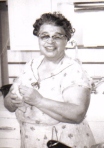 In spite of these unresolved notations, I recall making a similar summer journey — from my mother in Chicago to my father’s mother in Rockford. When school let out in June, my mother would pack up my things and take me to the Illinois Central train station at 12th Street and Michigan Avenue. She would hug me tightly and hand me off to a conductor, ensuring my safe passage with a “tip” in the hand. After a two hour ride, I would arrive in Rockford, where Mama Dora awaited on the platform to receive me. Emplacing me and my bag in her shiny Cadillac, she would drive us home to Christina Street. In following days, we would go to Bergner’s department store to buy new clothes. Her husband, Russell, would take me to Camay’s music store for Brook Benton records (my grandmother loved “Kiddeo”), which were played on a monaural music system ensconced in a wood cabinet that dominated the living room. A neighbor girl, Belinda (who had six fingers) would comb my unruly hair everyday in return for a one dollar a week “salary.” Etta, another neighbor’s child, would keep me company during the long days while Mama Dora was at work as a domestic in the household of a rich family I hated because they took her away from me.
In spite of these unresolved notations, I recall making a similar summer journey — from my mother in Chicago to my father’s mother in Rockford. When school let out in June, my mother would pack up my things and take me to the Illinois Central train station at 12th Street and Michigan Avenue. She would hug me tightly and hand me off to a conductor, ensuring my safe passage with a “tip” in the hand. After a two hour ride, I would arrive in Rockford, where Mama Dora awaited on the platform to receive me. Emplacing me and my bag in her shiny Cadillac, she would drive us home to Christina Street. In following days, we would go to Bergner’s department store to buy new clothes. Her husband, Russell, would take me to Camay’s music store for Brook Benton records (my grandmother loved “Kiddeo”), which were played on a monaural music system ensconced in a wood cabinet that dominated the living room. A neighbor girl, Belinda (who had six fingers) would comb my unruly hair everyday in return for a one dollar a week “salary.” Etta, another neighbor’s child, would keep me company during the long days while Mama Dora was at work as a domestic in the household of a rich family I hated because they took her away from me.
In preparation for my own “grandmotherhood” I last month bought and assembled a swing set so my kids can experience the joy of “swinging” in their own 1-1/2 acre back yard in “Shamaland.” We will pick beans, greens and tomatoes, eat homemade frozen fruit pops, preserved jam and pound cake; watch movies and read books at bedtime. Julian will go to summer camp where he will learn how to swim. Violet will attend daycare at the “Land of the Little People” so I have time to write. In September, I will return two tired, sun kissed and happy (I hope) children to their parents — sad to see them go but happy to have my solitary life back.
It sometiimes seems that times were so simple in the past. But I know that is just an idealistic point of view in a world that has become far too complex for my appreciation. I tend to long for times when children were children, adults had all the answers, and summer was little more than a pleasant breeze against your face as you ate lunch under a weeping willow tree in the backyard, explored the unattended mysteries of Blackhawk Park, absorbed the tantalizing smells of dinner cooking on slow heat while you waited for Mama Dora to come home or stood naked as your bath was drawn, knowing she would embrace you in a fluffy towel and nurse the wounds of the day with turpentine before kissing you good night.
RIP (not)
16 June 2013
Last year, I connected with the white descendant of a man I believed fathered my black great grandfather. We met in cyberspace when Neil LESLIE found the photo I posted of his ancestor’s gravestone on a genealogy website.
When I met Neil, I was ecstatic. After years of research, I hoped I would finally fulfill the longing that has haunted me for 30+ years. Over many months, Neil and I developed a lively online relationship during which I met his siblings and collaborated on research techniques to track our presumed shared ancestor.
My genealogical target was James E. LESLIE (1823-1875) — a blacksmith from Iredell, North Carolina who migrated to Lowndes County, Alabama in the 1840s and owned a blacksmith shop on the Hayneville town square. My research had narrowed James LESLIE down to the right man in the right place at the right time with the right occupation + the right surname. He was a member of the same Baptist church as the man whom I surmised (based on estate records) owned my ancestor, Tom LESLIE, and his mother Harriett MORASS — plus, maybe, his wife Rhoda REEVES and her mother Easter REEVES. The cherry on top was the fact that Tom was only one of two black people in multiple Lowndes County censuses with the LESLIE surname.
In the end, this accumulation of logic was just too good to be true.
A couple of months ago, Neil agreed to take a DNA test to compare against the results for my first cousin, Frank LESLIE, the only living direct male in my LESLIE line. Both did 67 marker tests on FamilyTreeDNA.
When the results came back, Frank was one point off on each of 12 markers against 31 allelles. (I could almost hear Neil breathing a big sigh of relief when it took him off the hook for something he felt pretty bad about.)
Neil said:
“Gee, I’m not sure what to say right now. I know this must be a terrible disappointment for you. I am disappointed too. I was expecting that the DNA tests would confirm your theories and our relationship — but I have to be honest and say that I’m also relieved. I’m relieved that it appears my great-great grandfather wasn’t so much of a scoundrel that he fathered a child with a woman he enslaved and then denied paternity. I don’t know—you may think he’s still a scoundrel because he enslaved other human beings and fought for a government that defended that enslavement.”
I responded:
“Yes, I still think James — and most other white people (especially men) of the time were greedy, misguided and immoral to (1) wipe out the indigenous population, (2) enslave people to build their stolen country and (3) create the myth of white superiority.”
We concluded our discussion with this thought from Neil:
“I suppose we all want to believe that all of our ancestors were fine and noble people—just like we are! The truth, of course, is a lot more complex. As individuals, we have elements of the saint, the sinner, and the scoundrel within us, and our families do too. One thing I have often thought about since I began this process of finding out about my family is the idea that we are more than our genetics. If it comes to light that one of my ancestors did some morally questionable or even terrible things, I do not have to do the same thing. I can choose to do something different and something better. if I face up to the ugly parts of my family’s history honestly, maybe I can help future generations of Leslies avoid making the same mistakes.”
I had to agree and opined:
“YES, we are more than our genetics and we do have the ability to change the course of the future by being responsible people who adhere to high moral principles and work actively to improve society.”
Tom LESLIE always told his children he was “Portuguese and Indian” — and, in the final analysis, there is no doubt that his father was WHITE … the DNA trail shows 96% Scottish. His wife, Rhoda REEVES LESLIE also had a white father, as did ancestors on my maternal side. But WHO was Tom’s father? Why did he choose LESLIE as his surname?
I thought of the possibility that maybe it was Rhoda who was the child of James LESLIE. He was listed on the 1850 slave schedule with one female slave (age 30) and in 1855 with three slaves (no ages). My family story says the wife of Rhoda’s father was so incensed by her very being that she tried to kill the child by throwing her against a wall, giving her a concussion.
Unfortunately, I don’t have a direct line female to test in furtherance of this hypothesis. And, in any case, my meanderings amount to nothing more than fanciful guessing. All we have as African American slave descendants are discriminate ticks on census schedules that obscure and corrupt our origins (most especially our patrimony). For most of us, the facts will never be proven. In general, all white man had access at will to all enslaved women. The surviving dearth of records uphold the subterfuge.
It is beyond disappointing to wash 30 years of research down the drain. I am trying hard to digest the disappointment and not let it lead me back to the extreme anger I feel over historic white malfeasance and being thrust back into the netherworld of NEVER being able to KNOW my family origins.
A luta coninua.
